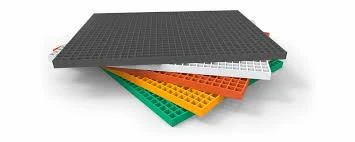
-
 Afrikaans
Afrikaans -
 Albanian
Albanian -
 Amharic
Amharic -
 Arabic
Arabic -
 Armenian
Armenian -
 Azerbaijani
Azerbaijani -
 Basque
Basque -
 Belarusian
Belarusian -
 Bengali
Bengali -
 Bosnian
Bosnian -
 Bulgarian
Bulgarian -
 Catalan
Catalan -
 Cebuano
Cebuano -
 China
China -
 China (Taiwan)
China (Taiwan) -
 Corsican
Corsican -
 Croatian
Croatian -
 Czech
Czech -
 Danish
Danish -
 Dutch
Dutch -
 English
English -
 Esperanto
Esperanto -
 Estonian
Estonian -
 Finnish
Finnish -
 French
French -
 Frisian
Frisian -
 Galician
Galician -
 Georgian
Georgian -
 German
German -
 Greek
Greek -
 Gujarati
Gujarati -
 Haitian Creole
Haitian Creole -
 hausa
hausa -
 hawaiian
hawaiian -
 Hebrew
Hebrew -
 Hindi
Hindi -
 Miao
Miao -
 Hungarian
Hungarian -
 Icelandic
Icelandic -
 igbo
igbo -
 Indonesian
Indonesian -
 irish
irish -
 Italian
Italian -
 Japanese
Japanese -
 Javanese
Javanese -
 Kannada
Kannada -
 kazakh
kazakh -
 Khmer
Khmer -
 Rwandese
Rwandese -
 Korean
Korean -
 Kurdish
Kurdish -
 Kyrgyz
Kyrgyz -
 Lao
Lao -
 Latin
Latin -
 Latvian
Latvian -
 Lithuanian
Lithuanian -
 Luxembourgish
Luxembourgish -
 Macedonian
Macedonian -
 Malgashi
Malgashi -
 Malay
Malay -
 Malayalam
Malayalam -
 Maltese
Maltese -
 Maori
Maori -
 Marathi
Marathi -
 Mongolian
Mongolian -
 Myanmar
Myanmar -
 Nepali
Nepali -
 Norwegian
Norwegian -
 Norwegian
Norwegian -
 Occitan
Occitan -
 Pashto
Pashto -
 Persian
Persian -
 Polish
Polish -
 Portuguese
Portuguese -
 Punjabi
Punjabi -
 Romanian
Romanian -
 Russian
Russian -
 Samoan
Samoan -
 Scottish Gaelic
Scottish Gaelic -
 Serbian
Serbian -
 Sesotho
Sesotho -
 Shona
Shona -
 Sindhi
Sindhi -
 Sinhala
Sinhala -
 Slovak
Slovak -
 Slovenian
Slovenian -
 Somali
Somali -
 Spanish
Spanish -
 Sundanese
Sundanese -
 Swahili
Swahili -
 Swedish
Swedish -
 Tagalog
Tagalog -
 Tajik
Tajik -
 Tamil
Tamil -
 Tatar
Tatar -
 Telugu
Telugu -
 Thai
Thai -
 Turkish
Turkish -
 Turkmen
Turkmen -
 Ukrainian
Ukrainian -
 Urdu
Urdu -
 Uighur
Uighur -
 Uzbek
Uzbek -
 Vietnamese
Vietnamese -
 Welsh
Welsh -
 Bantu
Bantu -
 Yiddish
Yiddish -
 Yoruba
Yoruba -
 Zulu
Zulu
High-Temperature Fiberglass Solutions for Industrial Applications and Enhanced Performance
The Role of Fiberglass Products in High-Temperature Applications
Fiberglass products have gained significant traction in various industries due to their remarkable characteristics and versatility. Among the numerous applications of fiberglass, its usage in high-temperature environments stands out, showcasing its unique properties that make it suitable for demanding conditions. As industries such as aerospace, automotive, and energy production continue to escalate their operational temperatures, the role of fiberglass in maintaining efficiency and safety cannot be overstated.
Understanding Fiberglass
Fiberglass, or glass-reinforced plastic (GRP), is composed of a plastic matrix reinforced with fine glass fibers. The incorporation of glass fibers not only enhances the tensile strength and durability of the material but also significantly improves its thermal resistance. Fiberglass can endure temperatures ranging from 200°C to over 1000°C, depending on the type of resin and fiberglass used. This capability to withstand high temperatures makes it an ideal choice for components that face extreme thermal conditions.
Applications in High-Temperature Scenarios
1. Aerospace Industry In the aerospace sector, fiberglass materials are pivotal. They are utilized in the construction of parts that must withstand significant heat during flight, including engine components and thermal protection systems. The lightweight nature of fiberglass contributes to overall fuel efficiency in aircraft, while its ability to withstand high temperatures ensures reliability and safety.
2. Automotive Industry Similarly, in the automotive industry, fiberglass is frequently used in the manufacture of heat shields, exhaust systems, and components that operate near high-temperature areas of the engine. The integration of fiberglass products leads to enhanced performance as they help insulate sensitive electronic components from heat, ensuring a longer life and improved functionality.
fiberglass products for high temperature

3. Energy Production In energy production, especially in power plants where high thermal efficiency is paramount, fiberglass products are utilized in insulations and as part of cooling systems. Their low thermal conductivity effectively reduces heat loss, promoting energy conservation and efficiency.
4. Industrial Applications Other industrial applications include the use of fiberglass in furnaces, kilns, and other environments where exposure to extreme temperatures is common. The strength and thermal stability of fiberglass products help support structures and components under intense heat, reducing the risk of failure and ensuring operational safety.
Advantages of Fiberglass Over Other Materials
When evaluated against traditional materials such as metals or ceramics, fiberglass presents several advantages. Firstly, it is significantly lighter than metals, leading to easier handling and lower transportation costs. Moreover, fiberglass does not corrode or oxidize under high-temperature conditions, which is often a drawback of metal components. Its resistance to chemical degradation also extends its lifecycle in harsh environments.
The production of fiberglass components can be more cost-effective as well. The ability to mold fiberglass into complex shapes reduces the need for additional machining processes, thus streamlining production and lowering labor costs.
Conclusion
In conclusion, fiberglass products have proven to be indispensable in high-temperature applications across various sectors. Their unique combination of heat resistance, lightweight properties, and durability make them a premier choice for industries that operate under extreme conditions. As advancements in fiberglass technology continue to evolve, we can expect even broader applications and enhanced performance, reinforcing fiberglass's position as a vital material in the modern industrial landscape. Whether in aircraft soaring through the skies, cars navigating challenging terrains, or power plants generating energy, fiberglass is a key player in ensuring success and safety amidst heat and pressure.









